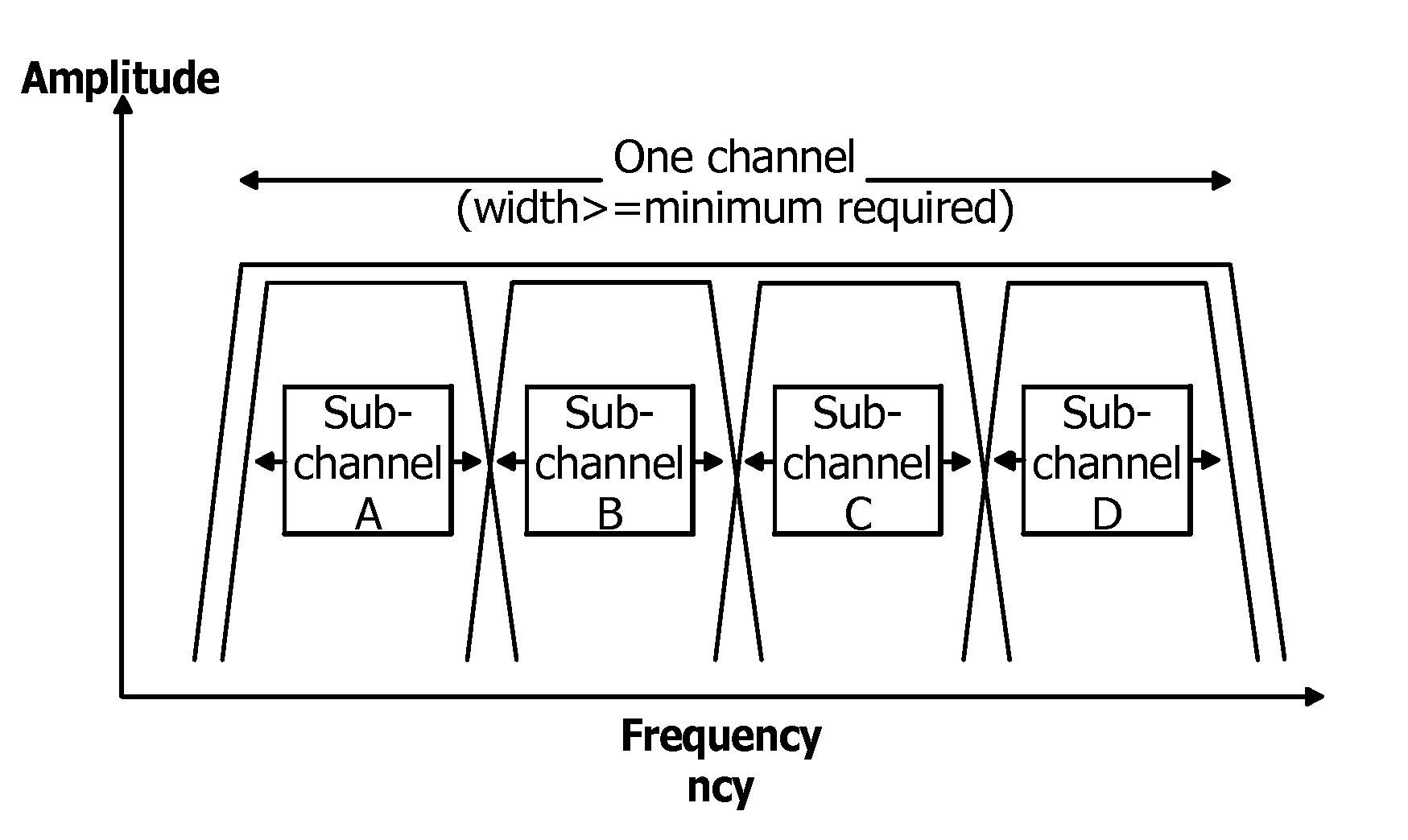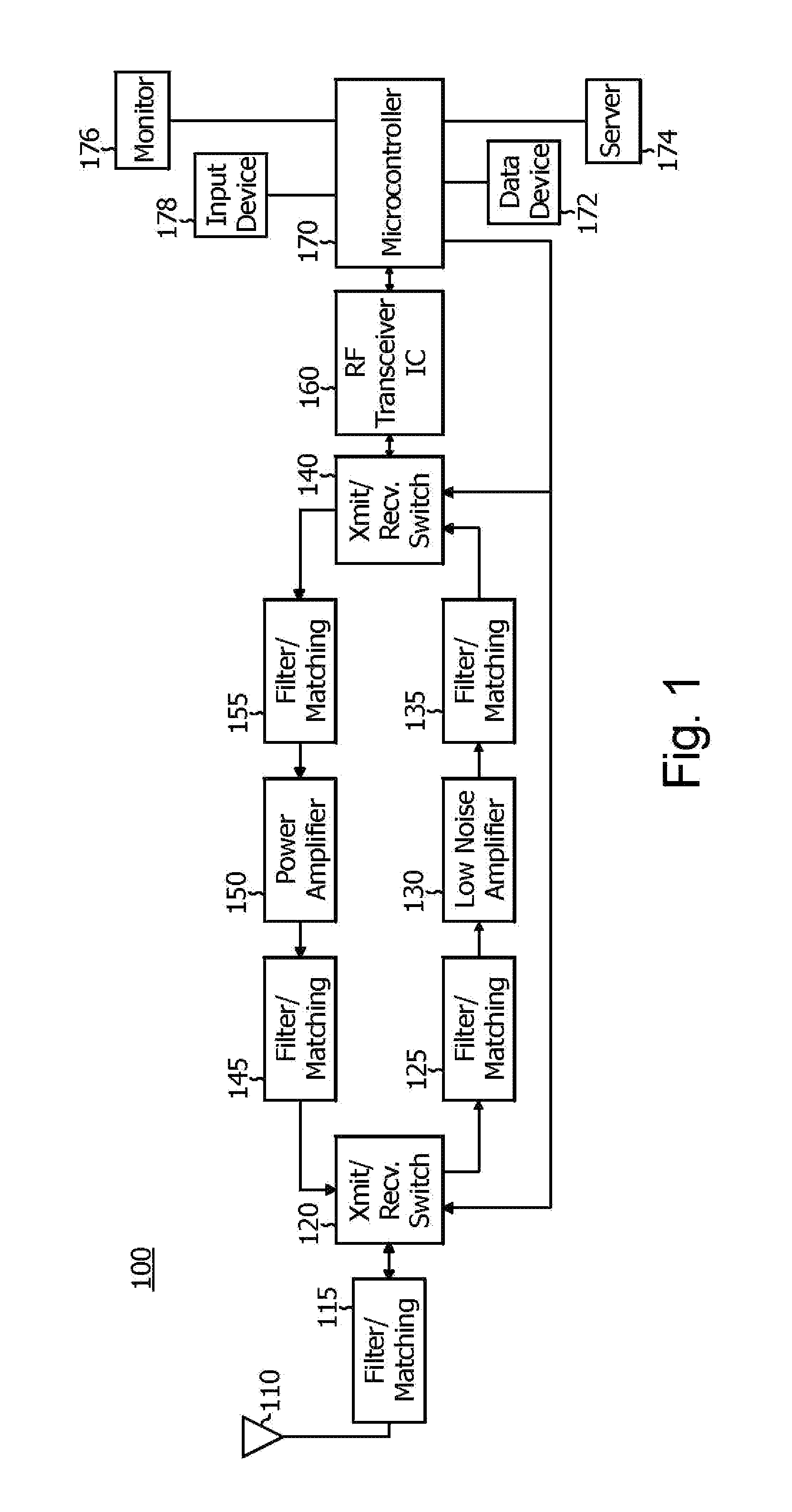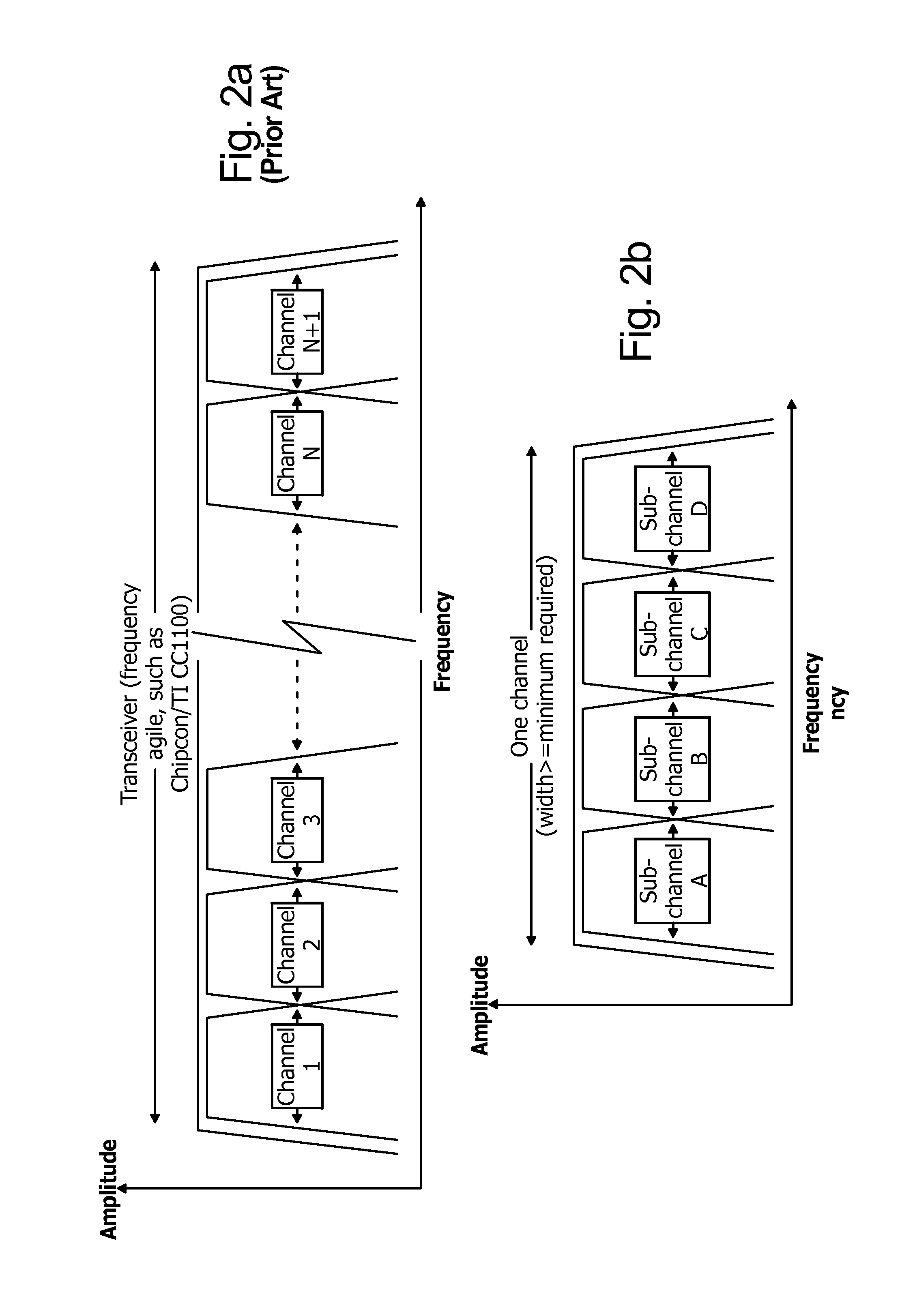Adaptive bandwidth, multi-channel digital modulation
a multi-channel digital modulation and adaptive bandwidth technology, applied in the field of wireless products, can solve the problems of data throughput decline, data transmission rate increase, and more power consumption of dsss than fhss implementation, so as to improve interference avoidance and interference avoidance ability
- Summary
- Abstract
- Description
- Claims
- Application Information
AI Technical Summary
Benefits of technology
Problems solved by technology
Method used
Image
Examples
Embodiment Construction
[0026]The present invention is directed to a novel RF transceiver, novel RF transceiver operation including operation within wireless products that meet the constraints of 47 CFR §15.247 as applied to digital modulation, and in particular 47 CFR §15.247(a2), (b3), (b4), and (e). As discussed above, the Federal Communication Commission (FCC) requires that the power spectral density conducted from intentional radiators (comprising a wireless RF communication system) to the receiving antenna of a spread spectrum RF communication system receiver (or transceiver) shall not be greater than 8 dBm in any 3 kHz band during any time interval of continuous transmission (15 CFR §15.247(e)). Paragraph 15.247(a2) defines a digitally modulated system as one with a 6 dB bandwidth of at least 500 kHz.
[0027]FIG. 1 is a system-level diagram of an REF transceiver 100 with the mini-hopping ability of the invention, for the transmission of digital data using an RF signal. The RF transceiver 100 includes ...
PUM
 Login to view more
Login to view more Abstract
Description
Claims
Application Information
 Login to view more
Login to view more - R&D Engineer
- R&D Manager
- IP Professional
- Industry Leading Data Capabilities
- Powerful AI technology
- Patent DNA Extraction
Browse by: Latest US Patents, China's latest patents, Technical Efficacy Thesaurus, Application Domain, Technology Topic.
© 2024 PatSnap. All rights reserved.Legal|Privacy policy|Modern Slavery Act Transparency Statement|Sitemap



